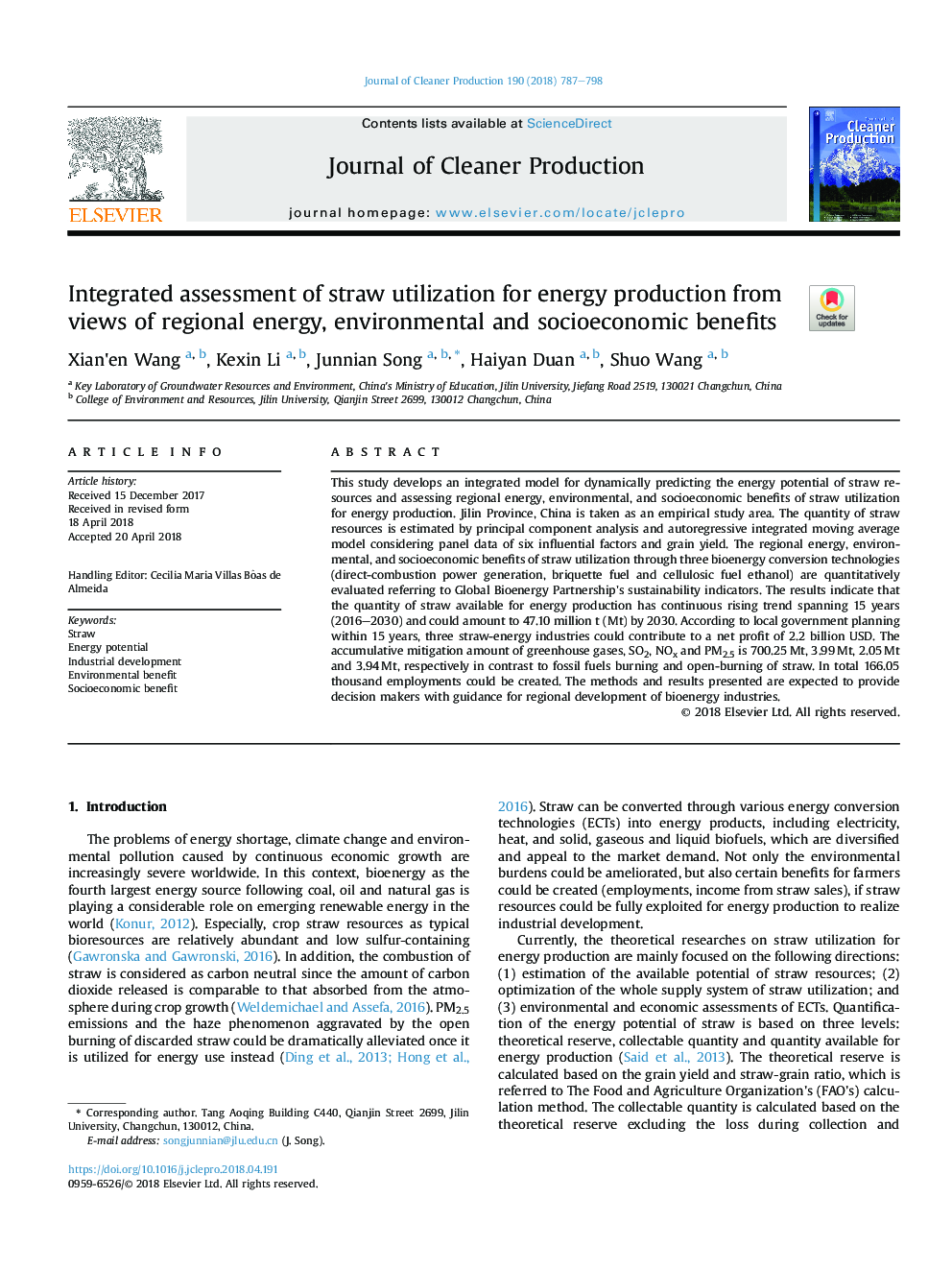| Article ID | Journal | Published Year | Pages | File Type |
|---|---|---|---|---|
| 8095037 | Journal of Cleaner Production | 2018 | 12 Pages |
Abstract
This study develops an integrated model for dynamically predicting the energy potential of straw resources and assessing regional energy, environmental, and socioeconomic benefits of straw utilization for energy production. Jilin Province, China is taken as an empirical study area. The quantity of straw resources is estimated by principal component analysis and autoregressive integrated moving average model considering panel data of six influential factors and grain yield. The regional energy, environmental, and socioeconomic benefits of straw utilization through three bioenergy conversion technologies (direct-combustion power generation, briquette fuel and cellulosic fuel ethanol) are quantitatively evaluated referring to Global Bioenergy Partnership's sustainability indicators. The results indicate that the quantity of straw available for energy production has continuous rising trend spanning 15 years (2016-2030) and could amount to 47.10 million t (Mt) by 2030. According to local government planning within 15 years, three straw-energy industries could contribute to a net profit of 2.2 billion USD. The accumulative mitigation amount of greenhouse gases, SO2, NOx and PM2.5 is 700.25â¯Mt, 3.99â¯Mt, 2.05â¯Mt and 3.94â¯Mt, respectively in contrast to fossil fuels burning and open-burning of straw. In total 166.05 thousand employments could be created. The methods and results presented are expected to provide decision makers with guidance for regional development of bioenergy industries.
Related Topics
Physical Sciences and Engineering
Energy
Renewable Energy, Sustainability and the Environment
Authors
Xian'en Wang, Kexin Li, Junnian Song, Haiyan Duan, Shuo Wang,
